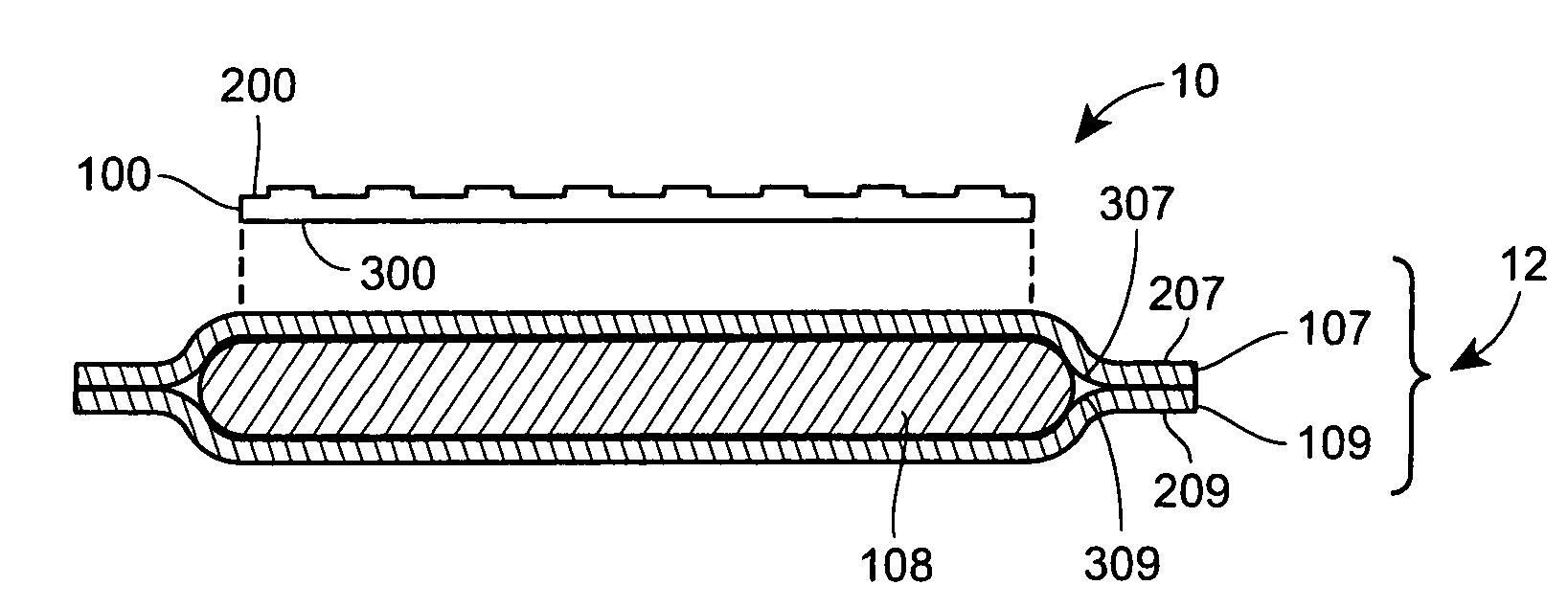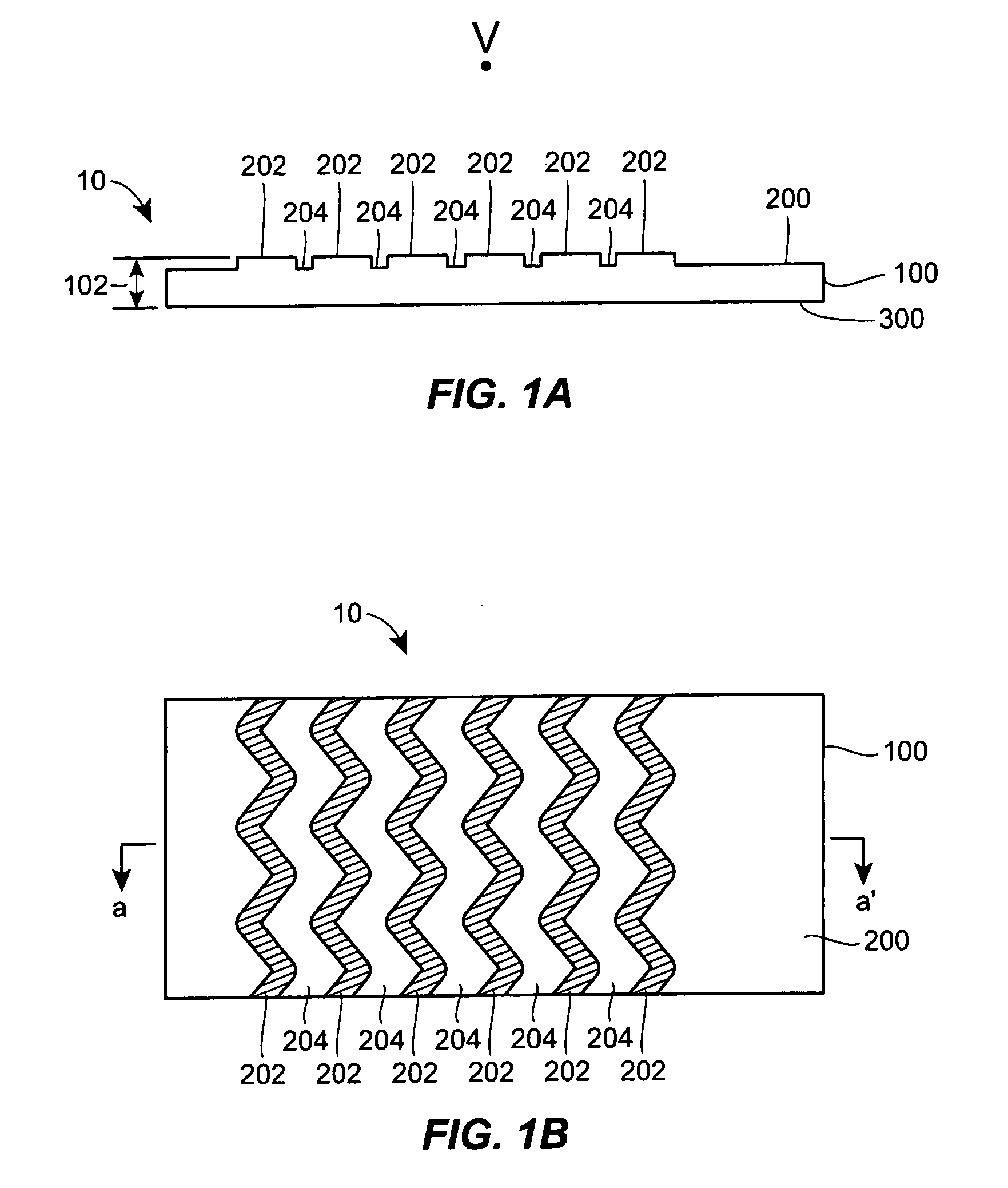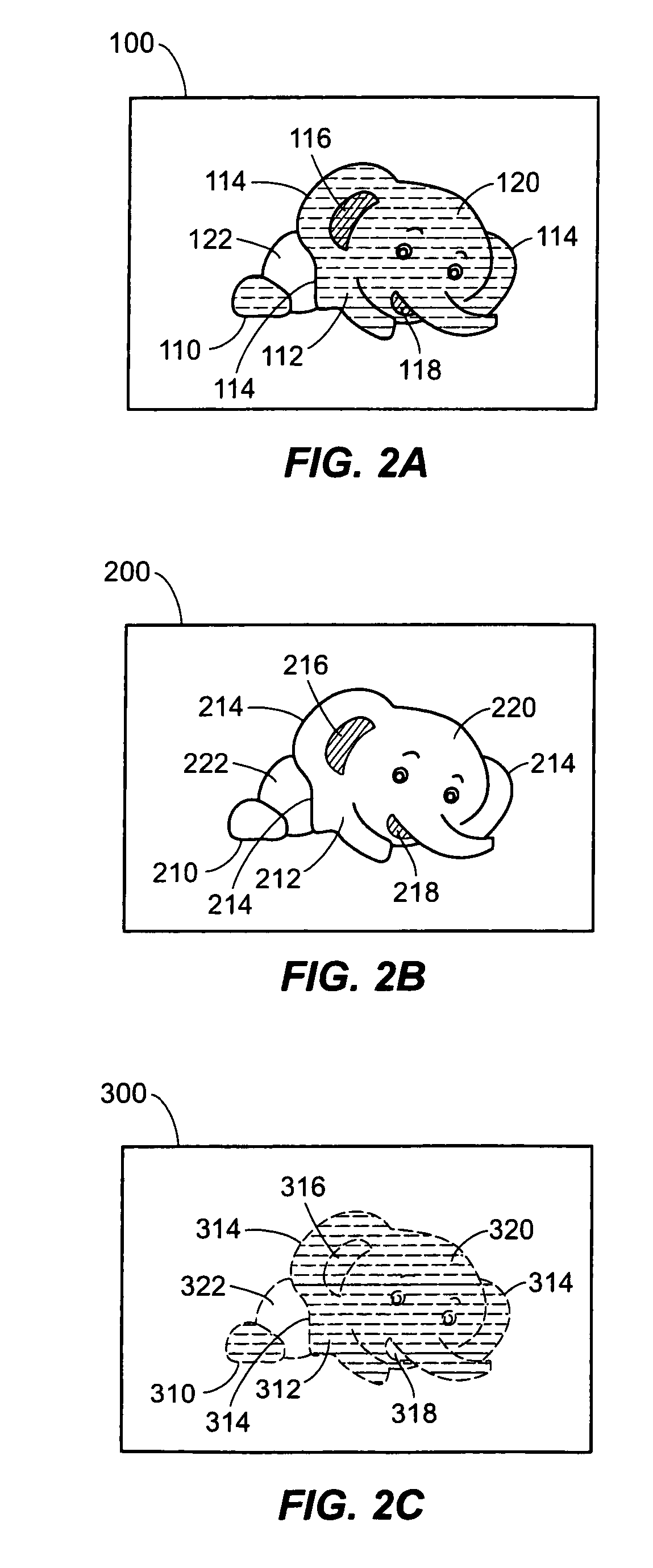Three-dimensional printed article
a printed article and three-dimensional technology, applied in the field of printed articles, can solve the problems of color loss and fuzz visibility, damage to the printed image, and loss of color on the garment-facing surface of the external cover, and achieve the effect of low color loss and good image definition
- Summary
- Abstract
- Description
- Claims
- Application Information
AI Technical Summary
Benefits of technology
Problems solved by technology
Method used
Image
Examples
examples
[0068]For each of Examples 1-3, a composite image is printed onto a continuous polyolefin non-woven web substrate. The non-woven web substrate is a polypropylene spunbond (45 g / m2 basis weight, about 100 μm thickness, available from Mitsui Chemical (Japan)) that is a whitish translucent material. The top (or first) surface of the substrate is contoured, having a soft fabric texture, and includes the loop elements of a mechanical fastener thereon. The bottom (or second) surface of the substrate is smooth.
[0069]The composite image printed on the substrate includes a cartoon character, similar to the one shown in FIGS. 2A through 2C, and a background. The cartoon character has a red body, an orange nose, and dark blue outline elements. The background generally has a colorful pattern and a word logo as its features, and these features include the colors yellow, magenta, cyan, and green. The composite image has an approximate surface area (including the cartoon character and the backgrou...
PUM
 Login to View More
Login to View More Abstract
Description
Claims
Application Information
 Login to View More
Login to View More - R&D
- Intellectual Property
- Life Sciences
- Materials
- Tech Scout
- Unparalleled Data Quality
- Higher Quality Content
- 60% Fewer Hallucinations
Browse by: Latest US Patents, China's latest patents, Technical Efficacy Thesaurus, Application Domain, Technology Topic, Popular Technical Reports.
© 2025 PatSnap. All rights reserved.Legal|Privacy policy|Modern Slavery Act Transparency Statement|Sitemap|About US| Contact US: help@patsnap.com



